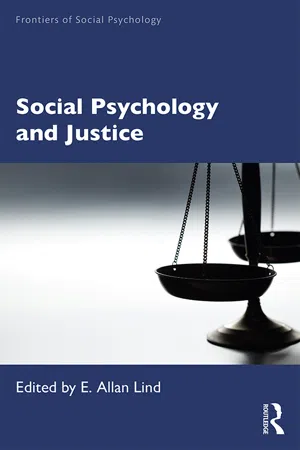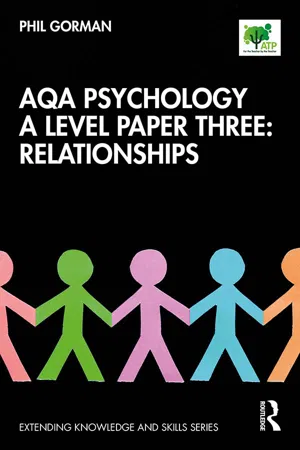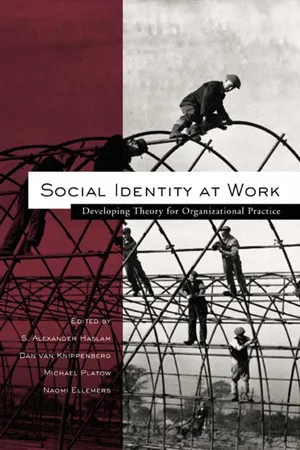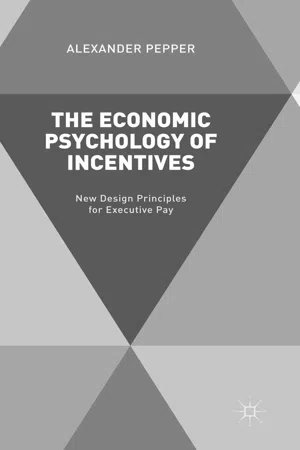Equity Theory
Equity Theory is a psychological concept that focuses on the idea of fairness in social exchanges. It suggests that individuals strive to maintain a balance between their inputs (effort, contributions) and outcomes (rewards, benefits) in comparison to others. When perceived inequity occurs, individuals may experience distress and seek to restore fairness in their relationships or situations.
8 Key excerpts on "Equity Theory"
- Steven G. Rogelberg(Author)
- 2016(Publication Date)
- SAGE Publications, Inc(Publisher)
...Equity Theory Equity Theory Jerald Greenberg Jerald Greenberg Greenberg, Jerald 417 420 Equity Theory Jerald Greenberg Equity Theory is a conceptualization that focuses on the causes and consequences of people’s perceptions of equity and inequity in their relationships with others. First proposed by J. Stacy Adams in 1963 and fully developed in a chapter published 2 years later, Equity Theory draws on earlier social psychological concepts inspired by Fritz Heider’s balance theory (e.g., relative deprivation, cognitive dissonance, and distributive justice). Although Equity Theory was developed as an approach to explaining the dynamics of social exchange relationships in general, it has been in the work context that the theory’s value was most strongly established. Components of Equity Theory According to Equity Theory, people make comparisons between themselves and certain referent others with respect to two key factors—inputs and outcomes. Inputs consist of those things a person perceives as contributing to his or her worth in a relationship. In a work setting, inputs are likely to consist of a person’s previous experience, knowledge, skills, seniority, and effort. Outcomes are the perceived receipts of an exchange relationship—that is, what the person believes to get out of it...
- eBook - ePub
Principles of Social Psychology
Third Edition
- Kelly G. Shaver(Author)
- 2015(Publication Date)
- Psychology Press(Publisher)
...To make such predictions, Adams combined the principle of distributive justice with some features of cognitive dissonance theory (Festinger, 1957, discussed in chapter 5) to develop what he called an Equity Theory of social exchange. Equity Theory Definitions of Equity. Whereas the principle of distributive justice concentrates on a condition of equality between two participants in a social exchange, Adams (1965) and later writers (e.g., see a review by Walster, Walster, & Berscheid, 1978) have focused on the antecedents and consequences of inequity. In his initial discussion of Equity Theory, Adams adapted the formula of Homans (1961), suggesting that a condition of equity between participants in an interaction obtains when each person's outcomes are proportional to his or her inputs: To the extent that one person's ratio of outcomes to inputs exceeds that of the other person, both participants are supposed to feel inequitably treated (but of course the "overpaid" person is less likely to complain than is the "underpaid" person). How does the formula work? Consider a brief example. If you are comparing a grade you have received with the grade received on the same examination by a good friend of yours, you will know how much work each of you put into studying for the examination, and you will also have some idea of how well each of you would have done on the basis of native ability in the subject, regardless of how much you had prepared. These two inputs, native ability and study time, are both positive. If by some scaling method the sum of your two inputs is 2 and the sum of your friend's two inputs is 4, then for equity to be maintained, your friend's outcomes would have to be twice as good as yours. There is, however, a difficulty with this definitional formula. It does not apply as shown if there is a mixture of positive and negative inputs and outcomes...
- eBook - ePub
- Virginia E. O'Leary, Rhoda K. Unger, Barbara S. Wallston, Virginia E. O'Leary, Rhoda K. Unger, Barbara S. Wallston(Authors)
- 2014(Publication Date)
- Psychology Press(Publisher)
...The experience of inequity motivates a person to attempt to reduce the dissatisfaction and to restore equity. Research undertaken to verify the predictions derived from Equity Theory met with remarkable initial success. Homans (1961) showed how data collected with clerical workers (Homans, 1953) could be understood in terms of distributive justice, and Adams and his coworkers (Adams & Jacobsen, 1964; Adams & Rosenbaum, 1962) showed that workers would change their work patterns in an attempt to reduce inequity. Leventhal and his colleagues (Leventhal & Anderson, 1970; Leventhal & Michaels, 1969; Levanthal, Weiss, & Long, 1969) took the lead in demonstrating that people allocated rewards to themselves and to others in an equitable manner, and Walster, Berscheid, and Walster (1973) expanded Equity Theory to include exploitative, helping, and intimate relationships. Equity Theory was quickly elevated to the status of a general theory of social behavior (e.g., Berkowitz & Walster, 1976; Walster, Walster, & Berscheid, 1978). Equity, Men, and Masculinity A number of theorists have pointed out that equity is a theory based on status, power, and hierarchies. It assumes that people are unequal and that inequalities should be maintained. The person who works the hardest, has the most skill, the better training, the most tools is entitled to reap the greatest benefits, and justice only occurs when this is so. As Deutsch (1975), Kahn, O’Leary, Krulewitz, and Lamm (1980), Leventhal (1976), and Sampson (1975) have pointed out, equity as a social norm reinforces competition, ambition, dominance, hard work, and aggressiveness. One would expect that equity would be most strongly endorsed by individuals who are concerned with maximizing their own outcomes, winning, doing things better than others, and who feel most comfortable knowing how good each person is and where in the social system each person fits...
- eBook - ePub
- E. Allan Lind, E. Allan Lind(Authors)
- 2019(Publication Date)
- Routledge(Publisher)
...In the middle of the twentieth century theory and research in the psychological, social, and economic sciences were for the most part founded on the assumption that self-interest drove almost all actions and indeed most cognition. Early research like that of Stouffer et al. (1949) on relative deprivation might in retrospect be said to involve both outcome and process fairness, but at the time the reactions to unfair treatment they studied were viewed as reactions to receiving outcomes that did not comport with norms of fair distribution. The justice and equity concepts that were introduced into sociology and psychology by scholars like Homans (1961), Adams (1963), and Blau (1964) focused on distributive justice, on the psychology of what made rewards and costs fair or unfair. Initially, work on the psychology of justice saw fairness as defined by proportional payment or punishment, and reactions to equitable or inequitable distributions in exchange relationships were the primary target of inquiry. An experiment by Adams and Rosenbaum (1962; Experiment 2) gives a good feel for the origins of and support for outcome-focused work on the social psychology of justice. In this experiment, the undergraduate participants in all conditions were paid well to conduct interviews, but approximately half of the participants were led to believe that this payment was more than was equitable, while the remainder were led to believe that the payment was equitable. (There was a second manipulation that had to do with whether the payment was hourly or piece-rate...
- eBook - ePub
Political Violence, Crises and Revolutions (Routledge Revivals)
Theories and Research
- Ekkart Zimmermann(Author)
- 2013(Publication Date)
- Routledge(Publisher)
...the overview in LEVENTHAL 1976a). The basically dyadic orientation in equity theorizing, however, has not been realized in those experimental settings (cf. BURGESS/NIELSEN 1974 for an exception and NEWPORT 1975 for a critique of their study). As HOMANS (1976:242) correctly points out, facets of social power and its consequences rather than Equity Theory in a narrower sense have been the subject of these experiments. (It should also be noted that there is a strong undercurrent in equity theorizing favoring the position and the feelings of the underdog.) 10 In general, we must be sceptical (cf. HOMANS 1976:240) of efforts at extending equity theorizing to a general theory of social interaction (as to these developments cf. of some of the approaches in BERKOWITZ/WALSTER 1976; more recently see WALSTER et al. 1978). It has been pointed out that there are other concepts of justice besides equity, e.g., the concept of equality (rewards distributed so that each individual gets the same share independently of his inputs) 11 or the distribution of rewards according to needs (cf. also DEUTSCH 1975, the typologies in LERNER 1975;DONNENWERTH/TÖRN-BLOM 1975;TÖRNBLOM 1977; WALSTER et al. 1978; and the theoretical considerations in LEVENTHAL 1976b:214 and passim as to combining several of these concepts of justice on a numerical basis). 12 Theoretical justifications as well as empirical findings bearing on the relevance of these alternative conceptualizations of justice 13 are also found in the overviews in BERKOWITZ/WALSTER (1976) and in the Journal of Social Issues 31, no. 3 (1975). Whereas all of these concepts still focus on comparisons between two persons or two groups, a perspective originally stressed in Equity Theory, there are some new efforts to extend Equity Theory beyond dyadic relationships (“person-specific equity”)...
- Phil Gorman(Author)
- 2020(Publication Date)
- Routledge(Publisher)
...want to have an unfair balance of inputs and outcomes in a relationship in their own favour. Equality The balance between what you put in and get out being exactly the same, rather than just fairly distributed, which is equity. Equity sensitive Individuals who want to have a fair balance of inputs and outcomes in their relationship. Equity Theory A theory of relationships that suggests that fairness is important for a satisfying relationship. Gender-role self-stereotyping Your own beliefs about your gender role conform to the traditional/common beliefs about it. Individualistic cultures Societies that are based on individual achievement and personal gain. Inequity What is put in and taken out by each partner isn’t fairly distributed. Inputs and outcomes The balance between how much you give to a relationship compared to how much you get out. Over-benefitting Getting significantly more out of a relationship than you put in. Priming A technique used in some experiments to provide people with a stimulus that gets them thinking about a particular topic, which they can then be tested on. Retrospective data Information that has been gathered about events that happened at some time in the past and may be difficult to accurately recall now. Social exchange theory A theory that suggests that people in a relationship attempt to minimise costs and maximise. benefits. Under-benefitting Getting significantly less out of a relationship than you put in. Plenary: Exam-style questions and answers with advisory comments Question 1. Explain what is meant by the term equity in relation to romantic relationships? [2 marks] Marks for this question: AO1 = 2 Advice: In a question like this, it’s important to make sure you are making it clear how this relates to psychology, so it will probably require an example...
- eBook - ePub
Social Identity at Work
Developing Theory for Organizational Practice
- S. Alexander Haslam, Daan van Knippenberg, Michael J. Platow, Naomi Ellemers, S. Alexander Haslam, Daan van Knippenberg, Michael J. Platow, Naomi Ellemers(Authors)
- 2014(Publication Date)
- Psychology Press(Publisher)
...The first, known as “distributive fairness,” forms the basis of the actual allocation of valued resources between people and groups in non-self-interested ways. A variety of forms of distributive fairness have been outlined theoretically and studied empirically (Deutsch, 1975, 1985 ; Marx & Engels, 1848/1986 ; Tornblom & Foa, 1983). These include a need-based rule, an equality rule, a rule that people should receive outcomes proportional to their contributions to the group effort (called “equity”), and a rule that people should receive outcomes proportional to their need so long as they contribute proportionally to their ability. Each distributive fairness rule places a different emphasis, or value, on what is important in the particular context. For example, the equality rule tends to place greater emphasis on interpersonal relationships by not differentiating between people, whereas the need rule emphasizes assisting the weakest individual or group in the community (Schwinger & Lamm, 1981). The distributive fairness rule most often playing a formal role in organizations is equity. With this rule, potential recipients (e.g., employees) receive resources (e.g., money) proportional to some input or contribution to the organization. Sometimes the input is time spent at work each day, sometimes it is the number of products made, and sometimes it is status (Adams, 1965). Whatever the input is, people who have more of it will have claims to greater amounts of the resource; people who work longer, adjust more cogs, or have the title leader will earn more than those who do not. This rule has the positive feature of encouraging people to perform and produce, under the assumption that they will receive more if they produce more (Lawler, 1968). Importantly, however, fairness is maintained only when the ratio of the inputs to outcomes received for each person is equal to that of all other people in the same situation...
- eBook - ePub
The Economic Psychology of Incentives
New Design Principles for Executive Pay
- A. Pepper(Author)
- 2015(Publication Date)
- Palgrave Macmillan(Publisher)
...Adams incorporates an assessment of differential inputs into the social comparison process, building on the work of Homans and Blau. 18 In the management literature “fairness” is often used interchangeably with “justice”. 19 After an early focus on distributive justice, an extensive organisational justice literature has developed, incorporating concepts of procedural justice, interactional justice and, increasingly, attempts to integrate the multiple justice dimensions 20 Varian and later Baumol make social comparison the basis of an economic theory of fairness. 21 Fehr and Schmidt propose a model which, while making no reference to Varian or Baumol, nevertheless largely follows the structure of their definitions. 22 Isaac et al. advance what they call a “positive theory of economic fairness”, which they use to derive political and legal principles. 23 Other economists propose economic theories of fairness which are essentially variations on Fehr and Schmidt, but which allow for, inter alia, differential wealth effects and concave utility functions. 24 In order to provide the analytical framework for this chapter I make a number of observations at this point. First, the approach I have chosen to take in this study is exploratory, looking for patterns in the data and seeking explanations for those patterns in existing theory, before integrating the findings and theory to construct new propositions. 25 I favour Lindenberg’s “method of decreasing abstraction”, commencing with a simple framework and, in successive stages, incorporating additional assumptions as necessary on the basis that: “a model should be as simple as possible and as complex as necessary”. 26 Second, one of the objectives of this chapter is to challenge parts of agency theory and tournament theory. Although widely adopted by management scholars 27 and highly influential in the design of corporate governance frameworks, 28 these are both essentially economic models...







